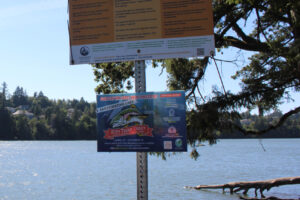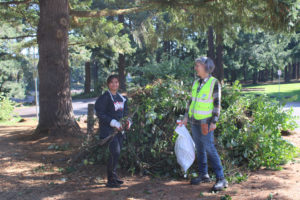It is Friday afternoon in the dog days of summer and the temperature has been in the high 80s all week.
In Camas, the lure of the open water prompts many to ignore visible warning signs.
Teens jump off a pedestrian bridge near Lacamas Park into water connecting Lacamas and Round lakes. It is the same site where 14-year-old Anthony Huynh drowned in August 2019 after jumping off the bridge into the cold water below. Nearby, signs warn the teens that toxic blue-green algae is present in both Lacamas and Round lakes.
At a boat launch off Leadbetter Road north of Camas, kayakers, boaters and jet skiers unload their watercrafts and head toward the cool waters of Lacamas Lake.
Next to them, a very visible sign at the water’s edge gives a similar warning to those posted near Lacamas Park: “Warning,” the sign reads in bold, yellow block letters. “Toxic algae present. Lake unsafe for people and pets.”



